
Looking for cool sights and things to visit in Marrakech? From Jemaa el-Fna square to rejuvenating hammams, we’re covering eight of our favorite landmarks and things to do in Morocco’s most celebrated city.
For expert help building a tailored Morocco itinerary, plus VIP perks at the top hotels in Morocco, connect with a Fora Advisor. They’ll ensure your Morocco experience is the trip of a lifetime.
Sights, places and things to visit in Marrakech: 8 of our favorites
Of all Morocco’s best places to visit, Marrakech arguably offers some of the widest selection of things to do and visit.
(P.S. If you want to know where to stay, check out our guide to the best hotels in Marrakech, Morocco.)
1. Jemaa el-Fnaa: the heart of the Marrakech Medina
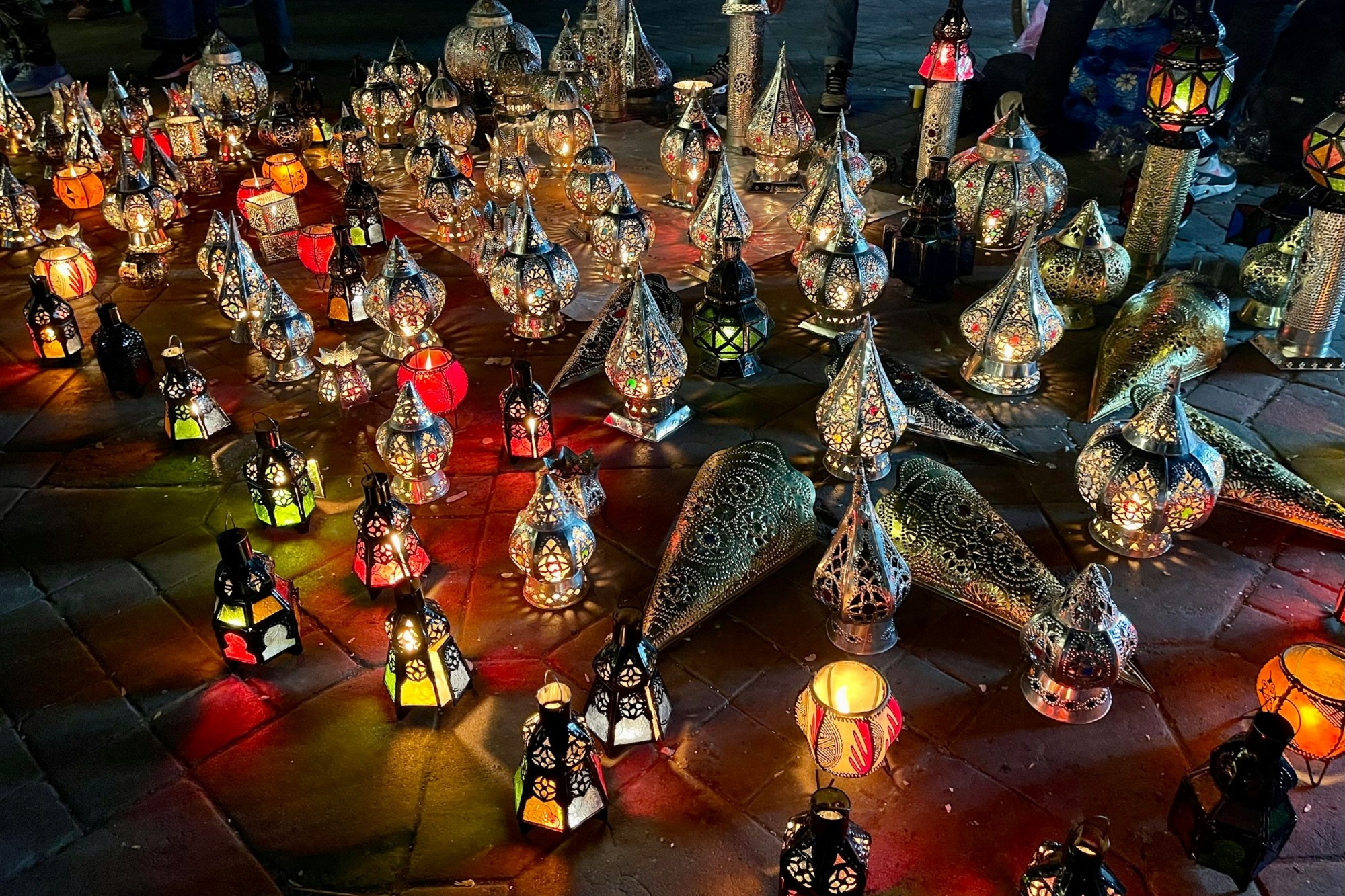
Most of the best things to visit in Marrakech are found within the city’s centuries-old medina, a walled inner city filled with cultural landmarks and open-air markets called souks (we’ll come back to these). And there’s perhaps no better place to get your fingers on the pulse of the Marrakech Medina than Jemaa el-Fnaa, the main square.
By day, the square is usually filled with a dizzying array of vendors and food stalls selling authentic Moroccan wares and street snacks. By night, many (not all) stalls are packed up and done for the day. Street performers of all kinds take their place.
It’s easy to be overwhelmed here — Jemaa el-Fnaa is chaotic — but that’s part of the fun. You won’t find a better place to witness local culture at its fullest.
(By the way, Royal Mansour Marrakech, one of the city’s most luxurious hotels, is within walking distance of Jemma el-Fnaa.)
2. Bahia Palace: a gorgeous example of historic Moroccan architecture
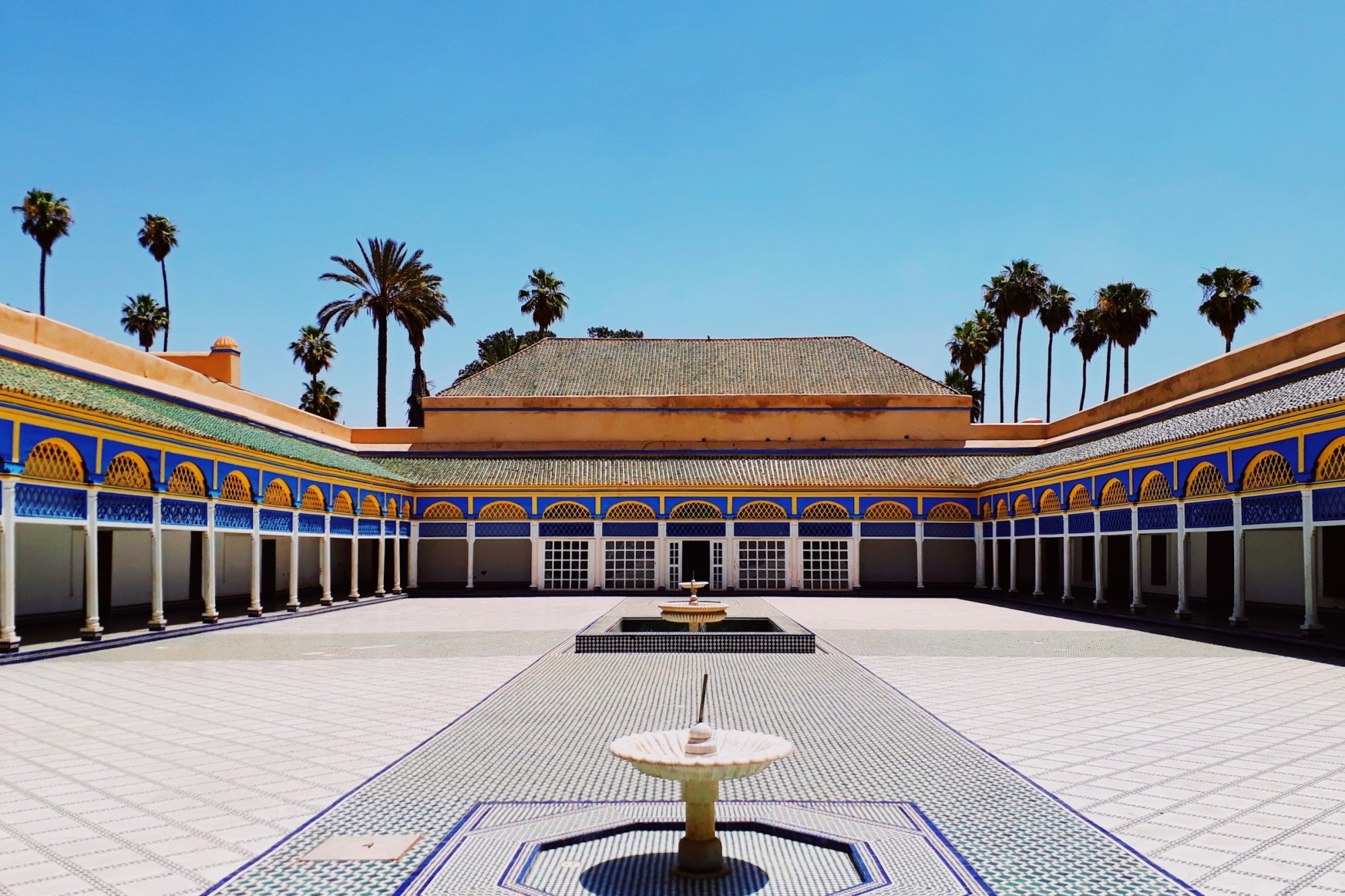
Where Jemaa el-Fnaa is eclectic and, well, chaotic, Bahia Palace often feels tranquil and orderly. About 10 minutes away from Jemaa el-Fnaa on foot, the palace is a comparatively newer addition to the Marrakech Medina — as in, it was built in the 1800s. The palace is a massive complex of spacious courtyards, oasis-like gardens and rooms with vibrant and intricate designs.
The tilework is particularly impressive, occasionally extending from floor to ceiling. Elsewhere, stucco walls are often carved with Arabic calligraphy, geometric patterns and other designs.
3. Jardin Majorelle: chic botanical gardens preserved thanks to Pierre Bergé & Yves Saint Laurent
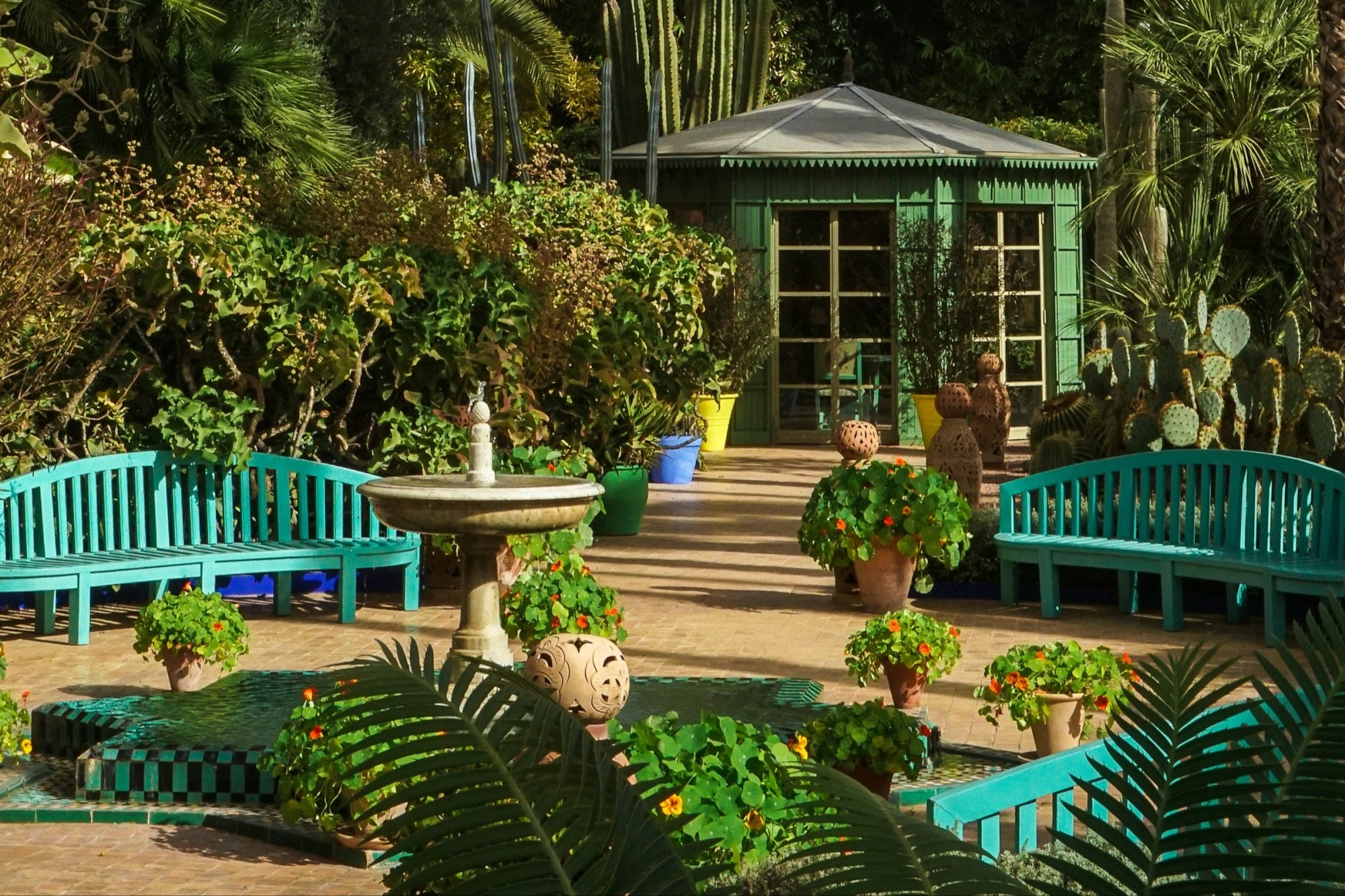
Another peaceful space in an otherwise boisterous city, Jardin Majorelle is a cross between a botanical park and an art exhibit. Serene desert gardens with plants from all over the world are complemented by pops of colorful architecture.
If you’re looking for a touch of nature during your stay in Marrakech but don’t have time to venture beyond the city’s walls, Jardin Majorelle is a lovely substitute. Don’t miss the Yves Saint Laurent Marrakech museum next door.
4. Madrasa Ben Youssef: a scenic reminder of the Islamic World’s contributions to academics
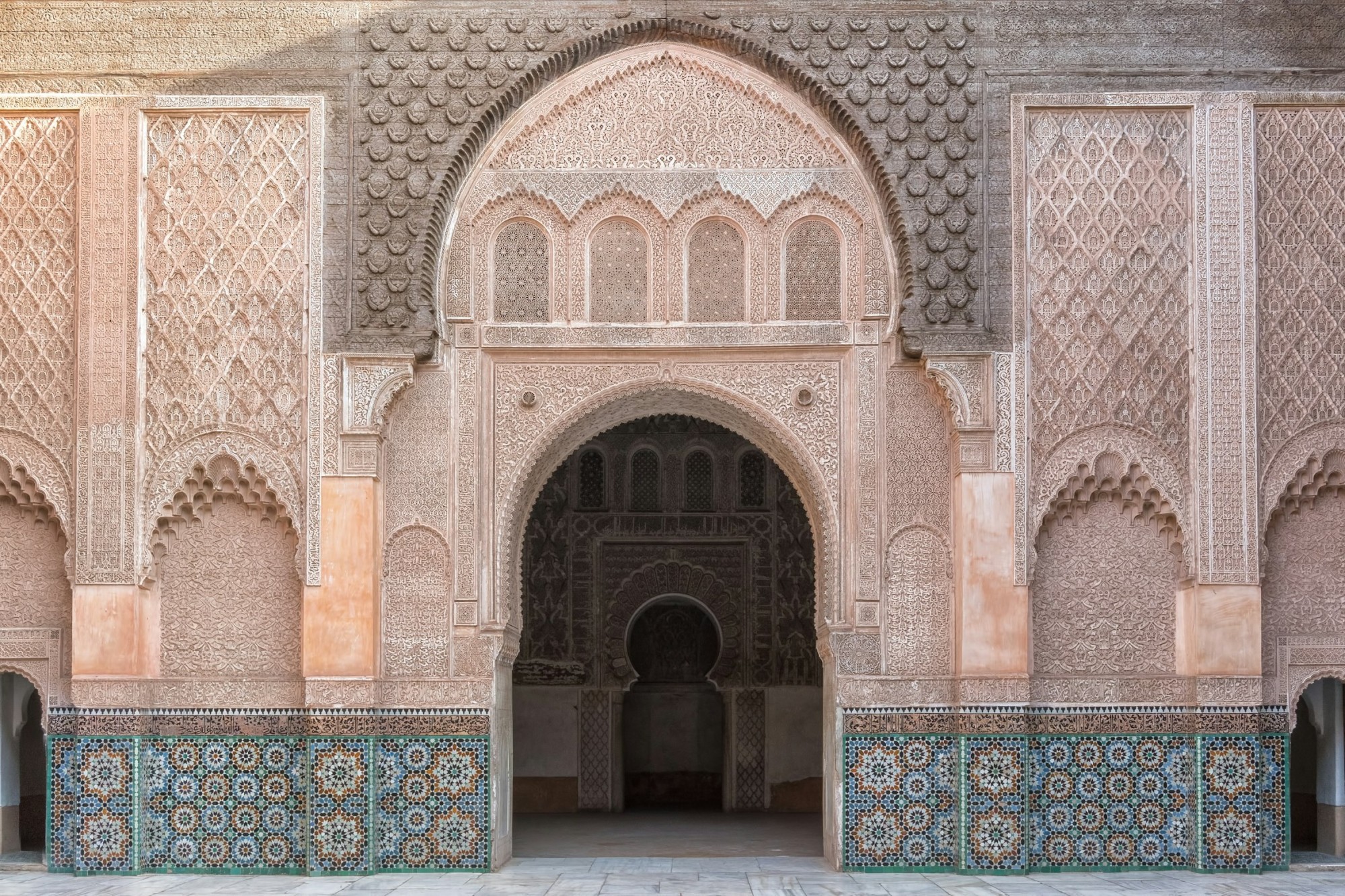
For centuries, the Madrasa Ben Youssef was a cornerstone of academia in the Islamic World. The school was built in the 1300s before it was rebuilt in the 16th century. While the Madrasa Ben Youssef no longer molds the minds of students (not directly anyway), it remains a stunning example of Islamic art and architecture.
It’s worth noting that the school is undergoing renovations and restoration efforts but has largely remained open.
5. The souks of the Medina: one of the most unique things to visit in Marrakech
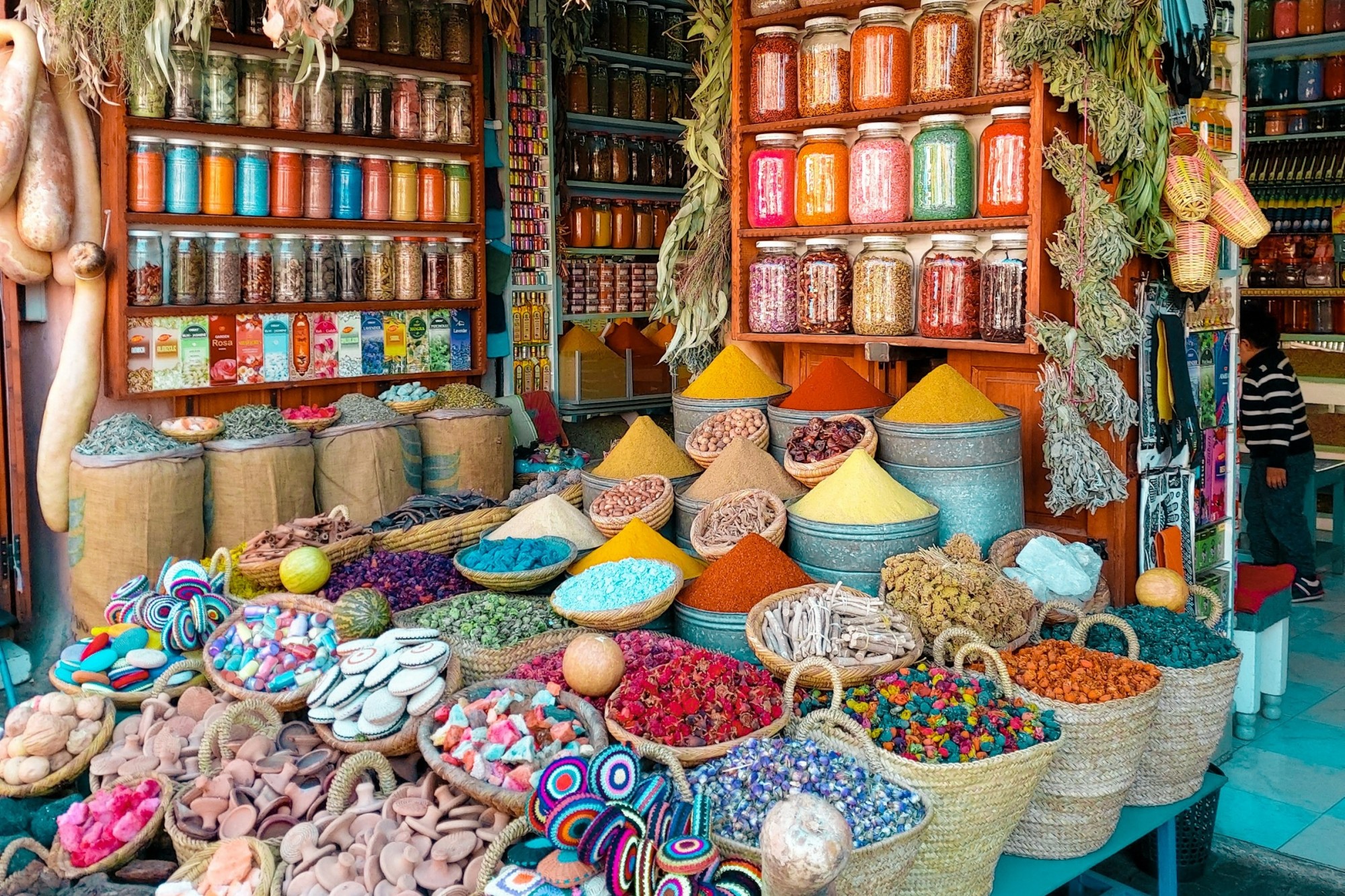
Jemaa el-Fnaa isn’t the only place in Marrakech where you’ll find Moroccan souks. They’re practically everywhere within the medina. In fact, you may even find that the stalls and vendors that are further from the main square are a little less traveled and notably more authentic. Either way, be prepared to be bombarded with a mix of aromas, loud traders and, on a busy day, hordes of travelers and locals.
Checking out the souks is an excellent way to explore street food in Morocco. But you’ll also find all sorts of goods, from handwoven fabrics to wood carvings and more.
If you’re interested in exploring authentic souks with a laid-back vibe, the markets in Essaouira, Morocco are famous for just that. Our Morocco travel guide covers how to get from city to city (Essaouira and Marrakech aren’t that far apart) — or you can always ask a Fora Advisor for direct advice.
6. Ruins of Badi Palace: a unique example of Moroccan architecture
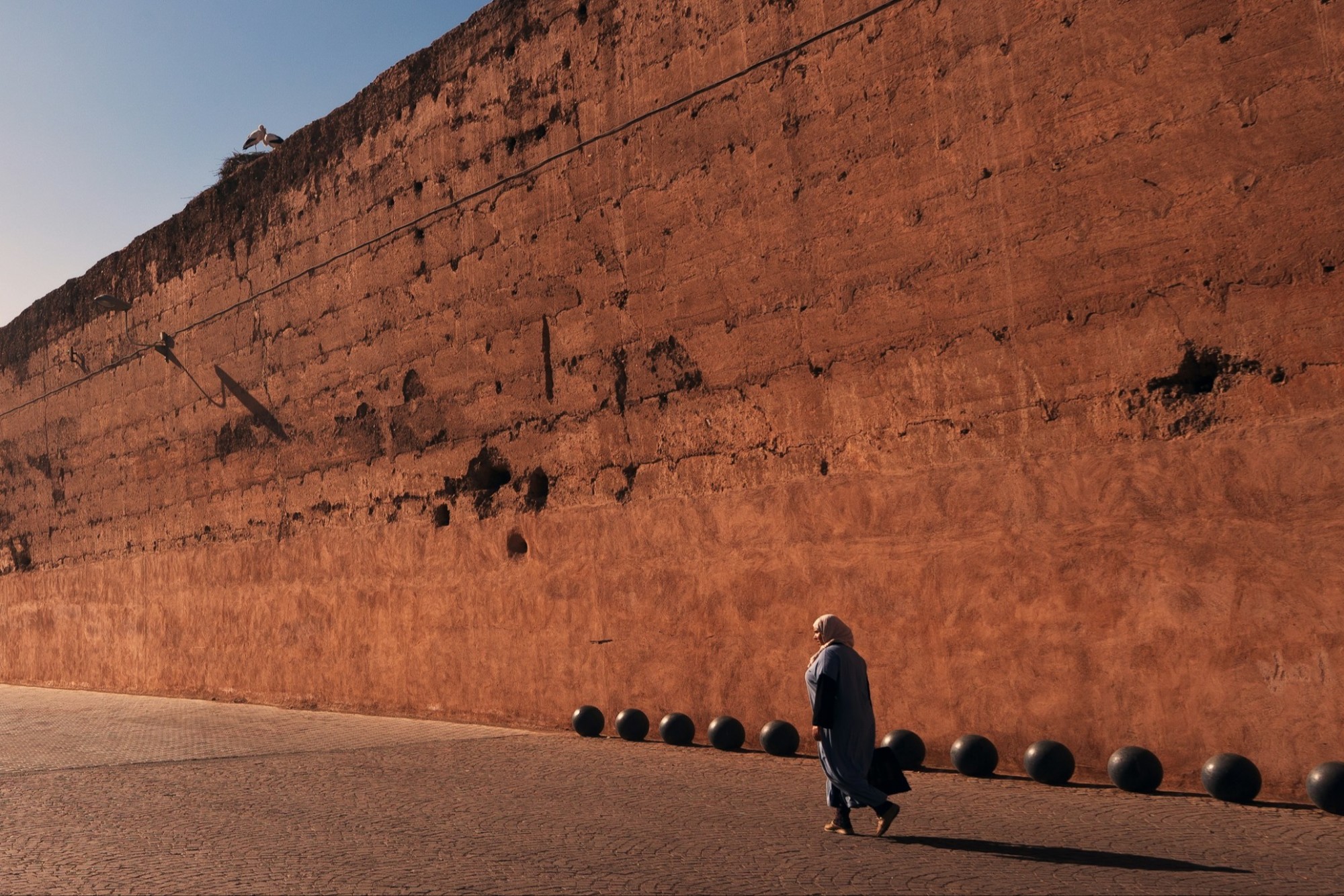
The ruins of Badi Palace are one of the few landmarks in Marrakech that’s not well-preserved. The Badi Palace predates the Bahia Palace by around 200 years. The former was commissioned by the Saadian Dynasty and incorporated a mix of design elements, most of which are Moroccan, but with subtle influences from Europe as well.
What Badi Palace lacks in vibrancy — it’s an archeological site after all — the site makes up for with deep historical ties to Marrakech.
7. Saadian Tombs & Kasbah Mosque: a once hidden gem and ancient place of worship

The Saadian Tombs have an interesting history. Built during the Saadian Dynasty, just like the Badi Palace, the tombs hosted prominent figures from the dynasty. After the dynasty’s fall in the 17th century, the tombs were sealed, hidden and largely forgotten until they were accidentally dug up in the early 20th century. Now they’re another gorgeous example of Moroccan architecture.
Right next door, the Kasbah Mosque stands as one of the oldest mosques in Marrakech. For nearly 1,000 years, Muslims have worshiped within its ornate halls. While non-Muslims are not allowed entrance, they’re free to admire the mosque’s intricate façade and walls.
8. Marrakech hammams: a traditional Moroccan spa experience
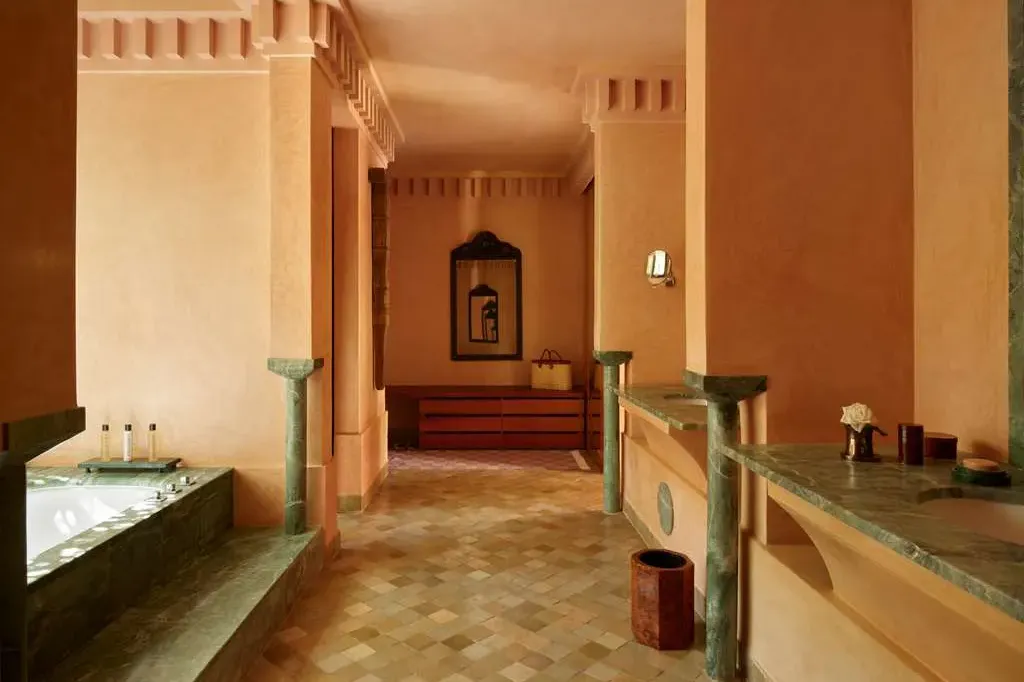
Image courtesy of Amanjena
Moroccan hammams are spas where guests first relax in a steam room before undergoing a vigorous body scrub. The experience is meant to cleanse both the body and spirit, and has deep roots in Moroccan culture.
Traditional hammams offer a communal experience, but private versions are often available, too. Either way, hammams are one of the more relaxing things to visit in Marrakech. Even better, many of the top local hotels — such as the Amanjena resort or The Oberoi in Marrakech — have luxurious hammams on site.
Looking for more cool things to visit in Marrakech? Ask a Fora Advisor
Of course, there are a lot more than eight cool things to visit in Marrakech. If you need more itinerary ideas — or simply want to enjoy complimentary VIP perks at the most lavish hotels in Morocco — we’ll hook you up with tailored recs and more.
Need more Morocco travel inspiration? Read these guides, too:
